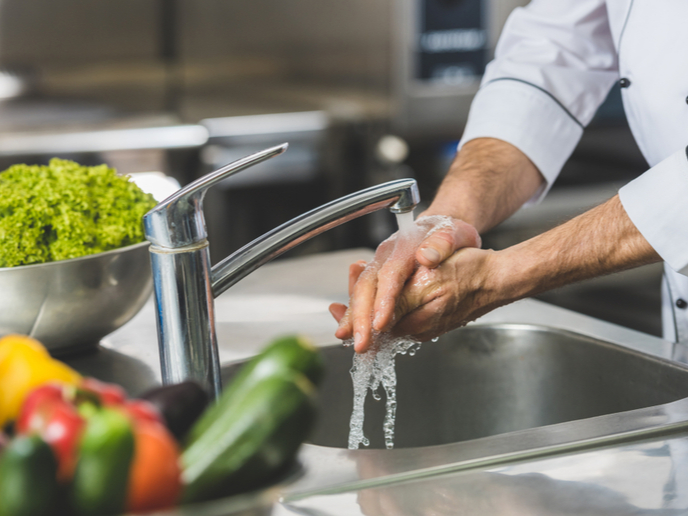Chicken in the kitchen? Wash your hands!
When it comes to bacteria causing food-borne illnesses in the EU, campylobacter and salmonella are the most common culprits. According to the European Food Safety Authority, over 91 000 cases of salmonella infections are reported each year. By far the biggest culprit of the two, campylobacter is responsible for most reported cases of gastrointestinal disease in the EU – 246 000 annually – with actual numbers believed to lie closer to 9 million yearly. So how can we prevent infection by such bacteria? The fact is that close to 40 % of food-borne outbreaks in the EU are caused by poor kitchen hygiene, especially when handling and preparing raw chicken. The solution is therefore actually quite simple: wash your hands. But how good are Europeans at following this straightforward guideline? A study carried out as part of the EU-funded SafeConsumE project examined handwashing practices in five European countries during the preparation of a raw chicken meal at home. Published in the journal ‘Food Control’, the results showed a lack of knowledge of the risks involved in handling raw meat. They also revealed distinct differences in knowledge, habits and equipment related to chicken and handwashing amongst the five countries. The findings draw attention to the need to adapt prevention campaigns based on each county’s practices and knowledge. The study consisted of a quantitative survey of about 1 890 respondents, combined with qualitative research (involving observation and semi-structured interviews) of 75 households in France, Norway, Portugal, Romania and the United Kingdom. Three categories of consumers were considered: young single men most likely to ignore food safety guidelines, families with small children who had a higher risk of falling ill from campylobacter and salmonella bacteria, and elderly households.
Kudos to Norwegians and the British
According to the data, the Portuguese and Romanians were more often guilty of touching raw chicken. Although handwashing was frequently reported by the survey participants, it wasn’t observed as often in real situations, pointing to a gap between intentions and practices. Only about a third of the participants washed their hands with soap after handling raw chicken. Most cases were observed in Norway (80 % of Norwegians) and the United Kingdom (64 % of British), followed by a small number in Portugal (15 %) and France (13 %). There were no instances of handwashing with soap after handling raw chicken in Romania. “In our study, Romanians presumably have knowledge that is out of step with their practices, which face barriers that include the availability of water or kitchen equipment,” the authors report in the study. “Romanians, French and Portuguese consumers may also have false knowledge of safe ways to clean hands, considering rinsing with water to be sufficient. For French and Portuguese consumers, touching raw poultry was presumably not perceived as risky, unlike other actions, such as touching the waste bin, blowing the nose and touching pet, which were followed by hand washing with soap.” The insights gained from the SafeConsumE (SafeConsumE: Safer food through changed consumer behavior: Effective tools and products, communication strategies, education and a food safety policy reducing health burden from foodborne illnesses) study could be used to inform European countries’ food safety communication strategies. For more information, please see: SafeConsumE project website
Keywords
SafeConsumE, chicken, food, handwashing, hygiene, safety, bacteria, salmonella, campylobacter



